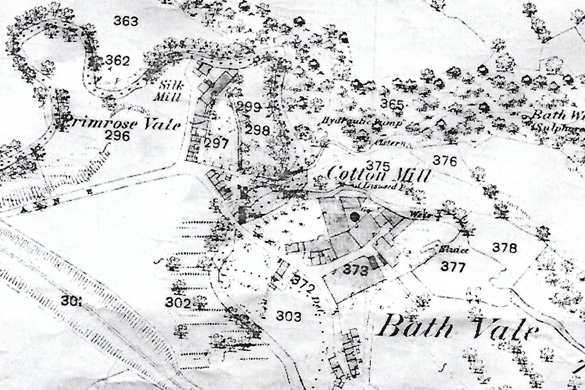
Charles Vaudrey
Charles Vaudrey was Chapelwarden in 1840 when the building of St Peter`s was completed. A hundred years earlier the builders had run out of money. Vaudrey and his fellow warden, James Hobson, oversaw the building of the steeply raked north west and south west galleries. Vaudrey owned two pews in the church which he, his family and his servants used. Together with Henry Hogg and Thomas Johnson Vaudrey helped the Reverend Edward Wilson set up the new parish and church of St. John in Buglawton. Wilson had been the schoolmaster at the town grammar school in the grounds of St Peter`s.
Like Hogg and Johnson Vaudrey`s mills were in the Biddulph valley, at Bath Vale just outside the town. He lived there with his family in property inherited from his father. Bath Vale was one of the first cotton spinning mills in a town known for its silk industry. He had two mills there: one for silk spinning and one for cotton spinning. Both mills were lit by gas from his own gasworks. The OS map of 1875 shows his Bath Vale mill with his house, workers cottages and land. Sited where the Timbers Brook and Biddulph Brook meet it later had a lane connection to the Biddulph Valley Railway. Nothing now remains of this working settlement, but his name is remembered in a nearby street, Vaudrey Crescent.
Although a wealthy businessman and property owner he never became mayor. His brother-in-law, Thomas Hall was mayor, and his cousin, “neighbour and friend” Christopher Moorhouse was Town Clerk. With other mill owners he put money into setting up the Congleton Gas Company. He became a director and its secretary. He and his father and brothers built an estate for their workers at the junction of Bromley Road and Moor Street. He sent his son to Christ`s College Cambridge to read law.Three generations of his family are buried in the oldest part of St Peter`s churchyard.
